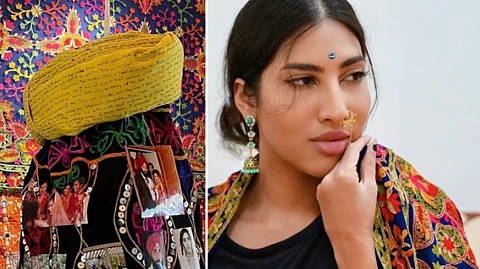
- HOMEGROWN WORLD
- #HGCREATORS
- #HGEXPLORE
- #HGVOICES
- #HGSHOP
- CAREERS
- ABOUT US
- CONTACT US

The phenomenon of displacement is synonymous with the Sikh struggle, at different points in Indian history the socio-political circumstances have forced families to relocate for safety purposes. Back in 1947, mass migration was a result of hate-fueled politics marring the population with irreparable damage and resulting in Sikhs being displaced from their homes and forced to live in refugee camps.
Although people from all religions faced this atrocity, the sheer number of Sikhs involved in the migration due to the separation of Punjab, has left a long-lasting mark on the community, especially on our side of the border. It took decades for families to heal from the loss and trauma, as they rebuilt their livelihoods in a foreign land.
Somehow, members of the community were able to move forward with a new hope. Anyone who has ever interacted with the generation that witnessed the bloodshed, can attest to the fact that those individuals were the epitome of resilience and grit. Even after surviving the worst of humanity, they showcased compassion and generosity through the rest of their lives.
Unfortunately, little did the community know that darker days were yet to arrive. The period of emergency and internal disturbance was hard on the country at large but matters got increasingly hostile post the 70s. Operation Blue Star carried out by Indian security forces severely damaged one of the Holiest Sikh temples, where hundreds of civilians were killed and injured.
The assassination of the then prime minister Indira Gandhi by two Sikh bodyguards further fueled hatred towards the community leading to a mass genocide in the national capital of India. The tremors were felt across the country as the killings continued in different parts of the nation. The assault on religion and identity took various forms of violent expressions as the anti-Sikh sentiment grew.
In the aftermath of the pogrom, around 20,000 Sikhs fled the city or rather were forced to flee, leaving at least 1000 displaced persons, as reported in the government data. History repeated itself as the community once again migrated for their safety and well-being. Families also chose to move overseas due to their identities as Indians constantly being questioned with labels such as ‘Khalistani’ or separatist.
Documenting this experience, Ravjot Mehek Singh’s recent project is an ode to the resilience and struggles faced by the community. Named ‘Udasi’ (tours) after the spiritual travels of Guru Nanak (1st Sikh Guru), the displacement exhibit carries a dual meaning showcasing the plight of Sikh immigrants and underlining the slow process of becoming alienated from one’s homeland, culture, people and language.
Ravjot’s family, like many others, had to take these decisions for a better future for the future generations of Sikhs to follow. Irrespective, the journey has been tumultuous and is represented as such in the exhibit which narrates the tale of being uprooted from your homeland and moving to America through the medium of photographs and cultural objects.
“The feeling of leaving your family and friends behind, of leaving your home, the streets that you grew up on, the food from the corner cart you got every day, leaving behind your school, your clothes, your childhood notebooks. Eventually, the ‘Udasi’ that comes from leaving your culture behind is the hardest. Slowly forgetting the words you once spoke so fluently but now have no one to practice with in a new foreign nation. In many ways, any immigrant goes through an Udasi in both senses of the term. The journey is sad in its very essence, of leaving behind the land, languages and loved ones that once formed your identity and further finding footing in a new, foreign place.”
Ravjot Mehek Singh
There are very few women artists from the community who are given the platform to share untold narratives at an international level. Under the Curators Fellow Exhibition by Hopkinton Center for the Arts, Ravjot is showcasing the mixed-media sculptor as a storyteller by highlighting the overlooked experience of so many Sikh immigrants. Her project is not only a means for increasing the overall representation of the Sikh community but is also creating a sorely needed space for minorities and their stories in art.
Find out more about Ravjot’s project here.
